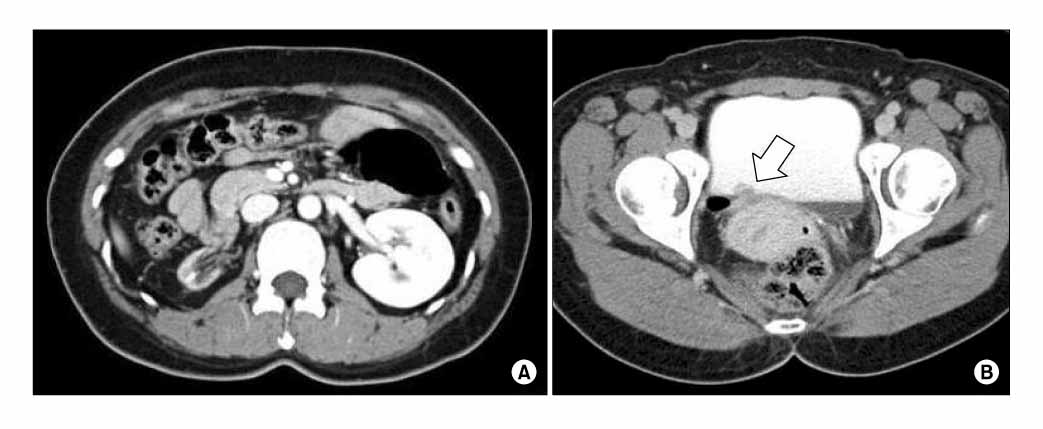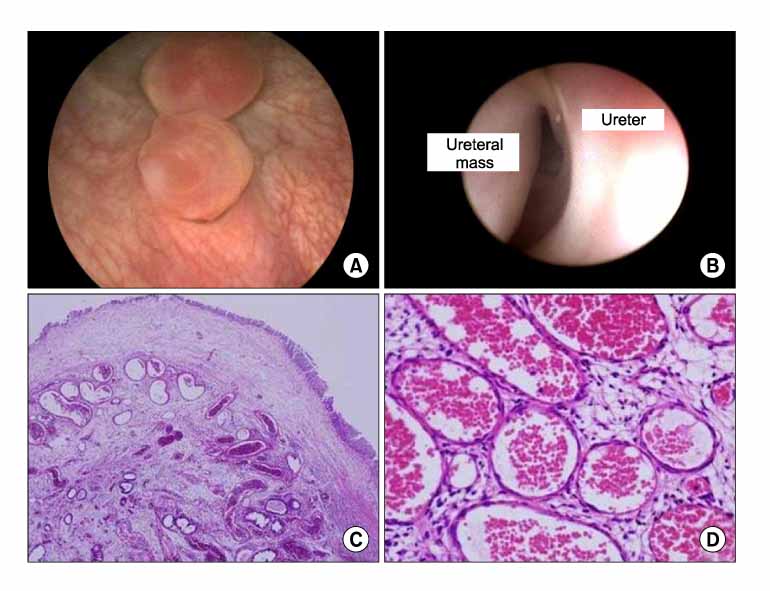Korean J Urol.
2009 Feb;50(2):192-194.
Cavernous Hemangioma of the Ureter
- Affiliations
-
- 1Department of Urology, The Catholic University of Korea College of Medicine, Seoul, Korea. kjc@catholic.ac.kr
Abstract
- Ureteral cavernous hemangiomas are an extremely rare, benign tumor. Most cavernous hemangiomas of ureter are diagnosed postoperatively by pathologic examination. A 39-year-old female patient presented with a bladder mass found incidentally by abdominal ultrasound. The patient underwent computed tomography, urine cytology, and cystoscopy. Cystoscopy showed 2 masses protruding from the right ureteral orifice. The ureteral mass was resected endoscopically. The patient was finally diagnosed with cavernous hemangioma in the right ureter. Here we report this case of a ureteral cavernous hemangioma and review the literature.
Keyword
MeSH Terms
Figure
Reference
-
1. Jahn H, Nissen HM. Haemangioma of the urinary tract: review of the literature. Br J Urol. 1991. 68:113–117.2. Maestroni U, Dinale F, Frattini A, Cortellini P. Ureteral hemangioma: a clinical case report. Acta Biomed. 2005. 76:115–117.3. Biyani CS, Mackay AM, Sissions G, Pettersson B. An unusual filling defect in the ureter. Urol Int. 1998. 61:124–125.4. Chung MS, Chung MY, Shin OR, Han CH, Kang SH, Lee YS. Cavernous hemangioma in the renal pelvis. Korean J Urol. 2008. 49:457–460.5. Kim TH, Kwak JJ, Rha SH, Yoon JH, Cho WY. Adrenal cavernous hemangioma. Korean J Urol. 2008. 49:277–279.6. Lee JM, Wang JH, Kim HS. Multiple cavernous hemangiomas of the glans penis, penis, and scrotum. Korean J Urol. 2008. 49:92–94.7. Bae BJ, Seo IY, Rim JS. Recurrent cavernous hemangioma of the spermatic cord. Korean J Urol. 2006. 47:341–343.8. Browne RF, Meehan CP, Colville J, Power R, Torreggiani WC. Transitional cell carcinoma of the upper urinary tract: spectrum of imaging findings. Radiographics. 2005. 25:1609–1627.9. Uhlír K. Hemangioma of the ureter. J Urol. 1973. 110:647–649.10. Kiel H, Ullrich T, Roessler W, Wieland WF, Knuechel-Clarke R. Benign ureteral tumors. Four case reports and a review of the literature. Urol Int. 1999. 63:201–205.



